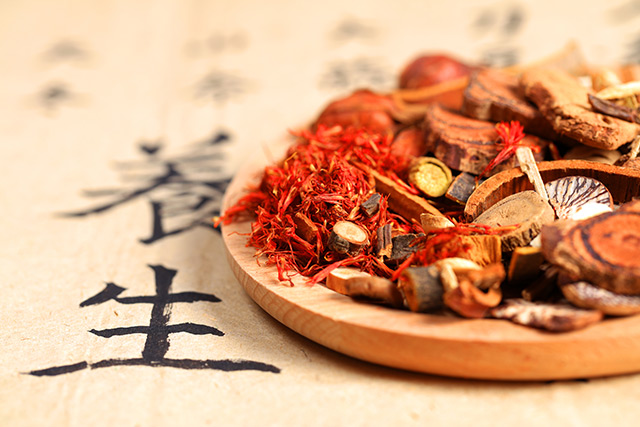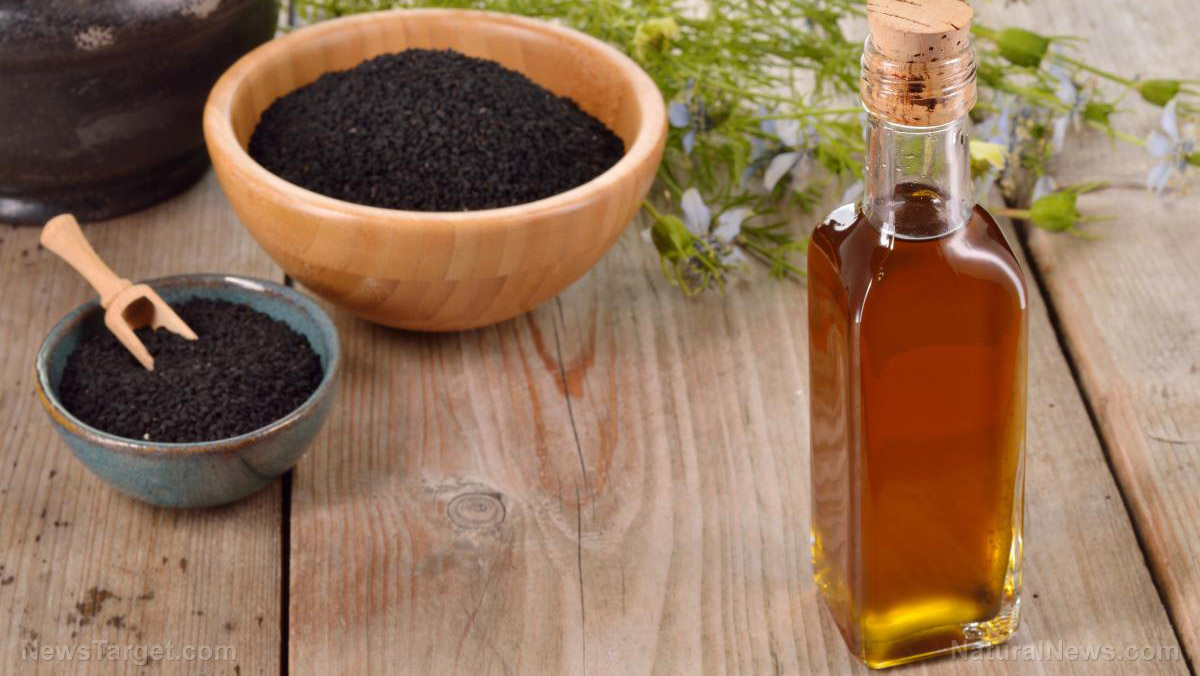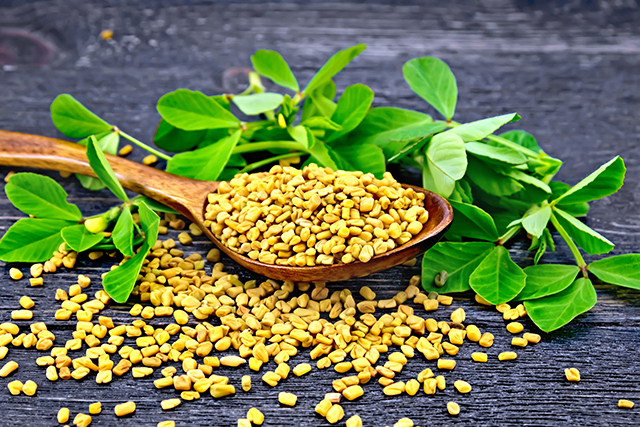Frankincense: One of the most powerful medicines from Mother Nature
02/01/2022 / By Olivia Cook

Frankincense has been used as a natural remedy by various cultures for thousands of years. Ancient Egyptians used frankincense as an insect repellant, a perfume and a salve, while ancient Greeks and Romans used it as a remedy for various conditions. Natural healers in ancient China also used frankincense extensively.
Named after the French phrase “franc encens,” which means high-quality incense, frankincense has been used across many religions in prayers, rituals and ceremonies because of its sweet, spicy, woody scent. Practitioners of Ayurvedic medicine use frankincense to calm the mind and ease anxious feelings and restlessness. (Related: Frankincense: Nature’s psychoactive antidepressant.)
Frankincense oil is extracted from the sap of five Boswellia tree species that can be found in Africa and the Middle East – Boswellia sacra, B. papyrifera, B. cartierii, B. frereana and B. serrata. The resin from these trees is left to harden upon exposure to air and is scraped off the tree after two weeks and stored for another 12 weeks so that it hardens further. Frankincense can be used dry and burned on hot coals as incense. It can also be steamed to make essential oil.
The main chemical constituents of frankincense essential oil are limonene, pinene, borneol, farnesol, phellandrene and myrcene.
Limonene demonstrates antioxidant, anti-inflammatory and anti-fungal properties. Pinene is known to strengthen and invigorate the respiratory system. Borneol contributes tonic, anesthetic, sedative and anti-spasmodic properties to this oil. Farnesol is the component that allows frankincense oil to reduce signs of aging by smoothing the look of wrinkles and increasing the skin’s elasticity.
Dubbed as the “king of essential oils,” frankincense oil continues to be popular today among practitioners in aromatherapy and naturopathy – two forms of alternative medicine that apply the components of essential oils to treat different medical conditions. They are also used to improve hair and skin health and overall well-being when applied topically or through inhalation.
When applied to the skin, the boswellic acid in frankincense oil get absorbed. When inhaled through the nose or mouth, frankincense oil is put in diffusers so you can feel the effect much faster than topical application. Frankincense oil can also be ingested but only under the guidance of a trained practitioner in natural medicine.
Health benefits of frankincense
Supports a healthy musculoskeletal system
Frankincense is an anti-inflammatory substance, which may help ease the pain and symptoms of arthritis. (Related: Got arthritis pain? Try frankincense.)
Studies on the components of frankincense show that the acids from the Boswellia sap can prevent the release of leukotrienes, which are inflammatory substances. Animal studies found that frankincense inhibited the synthesis of inflammatory enzymes.
Research on the efficacy and tolerability of frankincense oil in the treatment of osteoarthritis has shown that frankincense has been more effective than placebos when it comes to managing swelling, pain and joint movement associated with arthritis.
Other studies concluded that frankincense oil can help ease morning stiffness and can help reduce reliance on non-steroidal anti-inflammatory drugs (NSAIDs) that are widely used to relieve pain, reduce inflammation and bring down a high temperature. (Related: The therapeutic power of Indian frankincense for multiple sclerosis patients.)
Frankincense oil can be used topically on inflamed muscles and joints, as well as orally under the guidance of a trained practitioner in natural medicine.
Supports a healthy digestive system
Frankincense oil can help improve gut health, digestion, and ease digestive disorders, such as Crohn’s disease and ulcerative colitis.
A study on the therapy of active Crohn disease with frankincense extract concluded that in terms of a benefit-risk evaluation (considering both safety and efficacy), frankincense appeared to be superior to mesalazine, a medically prescribed drug to treat Crohn’s symptoms.
In the same study, researchers also found that frankincense was as effective as pharmaceutical drugs at managing ulcerative colitis after patients suffering from that condition were given a daily dose of frankincense for six weeks.
Supports a healthy respiratory system
Frankincense oil can help manage asthma and bronchitis. On a cellular level, asthma is linked to cells that are related to inflammation, whereas bronchitis is linked to cells involved in fighting infection. Bronchitis can happen even if you don’t have asthma. But asthma can increase your chances of developing bronchitis. Asthmatic bronchitis is bronchitis that happens as a result of asthma.
In a six-week clinical study on the effects of frankincense gum resin in patients with bronchial asthma, 70 percent of participants who were given a supplement containing extracts of frankincense gum resin and the bael fruit had an easier time breathing and experienced fewer asthma attacks. Researchers found the combination of frankincense and the bael fruit to be more effective than the placebo at easing symptoms of asthma.
Supports a healthy lymphatic system
The lymphatic system normally helps trap and destroy cancer cells, as well as bacteria and other harmful organisms. Sometimes, cancer cells get trapped in lymph nodes close to the cancer and may start to grow there. (Related: Frankincense (tree sap) may be a cure for cancer.)
Based on the results of a study about bladder transitional carcinoma, frankincense oil can distinguish cancer cells from normal cells. By activating a gene that plays a role in cell growth suppression and cell cycle arrest without inducing DNA fragmentation, frankincense oil can suppress the viability of cancer cells and may even fight against certain types of cancer.
According to test tube studies, frankincense may help fight against and repress these cancers: brain tumors; breast, ovarian and skin cancers, prostate cancer, pancreatic cancer, colon cancer and melanoma. (Related: Frankincense’s cellular healing power is a powerful solution for many types of cancer.)
Supports good oral health
Frankincense can help maintain good oral health because of its antibacterial nature.
A present study describes the antimicrobial activities of boswellic acid molecules against oral cavity pathogens. The boswellic acids (acetyl-11-keto-ß-boswellic acid or AKBA) can help prevent cavity formation by killing bacteria. AKBA has been proven to treat bad breath and help ward off gum disease, infections and toothaches.
One test-tube study found that frankincense extract was effective against Agrregatibacter actinomycetemcomitans, a bacteria that causes gum disease. As frankincense is naturally astringent, another randomized clinical trial on participants with plaque-induced gingivitis showed that it can help heal mouth sores associated with poor oral health.
Supports skin health
Together with its antibacterial, antiseptic and antioxidant qualities, frankincense is among the most powerful essential oils. It protects the skin by reducing inflammation and negating the effect of free radicals generated by unhealthy diets, lack of exercise, environmental pollutants and exposure to harmful electromagnetic fields.
Frankincense oil has become a popular ingredient in skincare products that help with the rejuvenation of the skin, keeping skin cells strong and plump and maintaining elasticity. It also has moisturizing properties that keep the skin from drying out.
Frankincense oil is a natural astringent that can help get rid of skin imperfections and conditions like acne and wounds. As a healing oil, frankincense is used topically for reducing the appearance of age spots, stretch marks and scars. In addition to being antibacterial, frankincense oil helps prevent clogged pores and spots by reducing sebum production in individuals with oily skin.
Given all these amazing health benefits and healthy uses, frankincense certainly offers the invaluable gift of healing.
More related stories:
Frankincense: Nature’s psychoactive antidepressant.
Frankincense is a healing substance that has a number of likely health benefits.
Rediscovering the many health benefits of frankincense, a natural analgesic and anti-inflammatory.
Watch the video below about the health benefits and uses of frankincense.
This video is from the Natural Remedies channel on Brighteon.com.
Check out Natural.news for more articles about natural remedies from Mother Nature.
Sources include:
Submit a correction >>
Tagged Under:
alternative medicine, anticancer, Boswellia, Cosmetics, digestive health, essential oils, frankincense, natural antibiotics, natural cures, natural health, natural medicine, Naturopathy, oral health, pain relief, remedies, respiratory health, skin health
This article may contain statements that reflect the opinion of the author
RECENT NEWS & ARTICLES
Natural.News is a fact-based public education website published by Natural News Features, LLC.
All content copyright © 2018 by Natural News Features, LLC.
Contact Us with Tips or Corrections
All trademarks, registered trademarks and servicemarks mentioned on this site are the property of their respective owners.






















